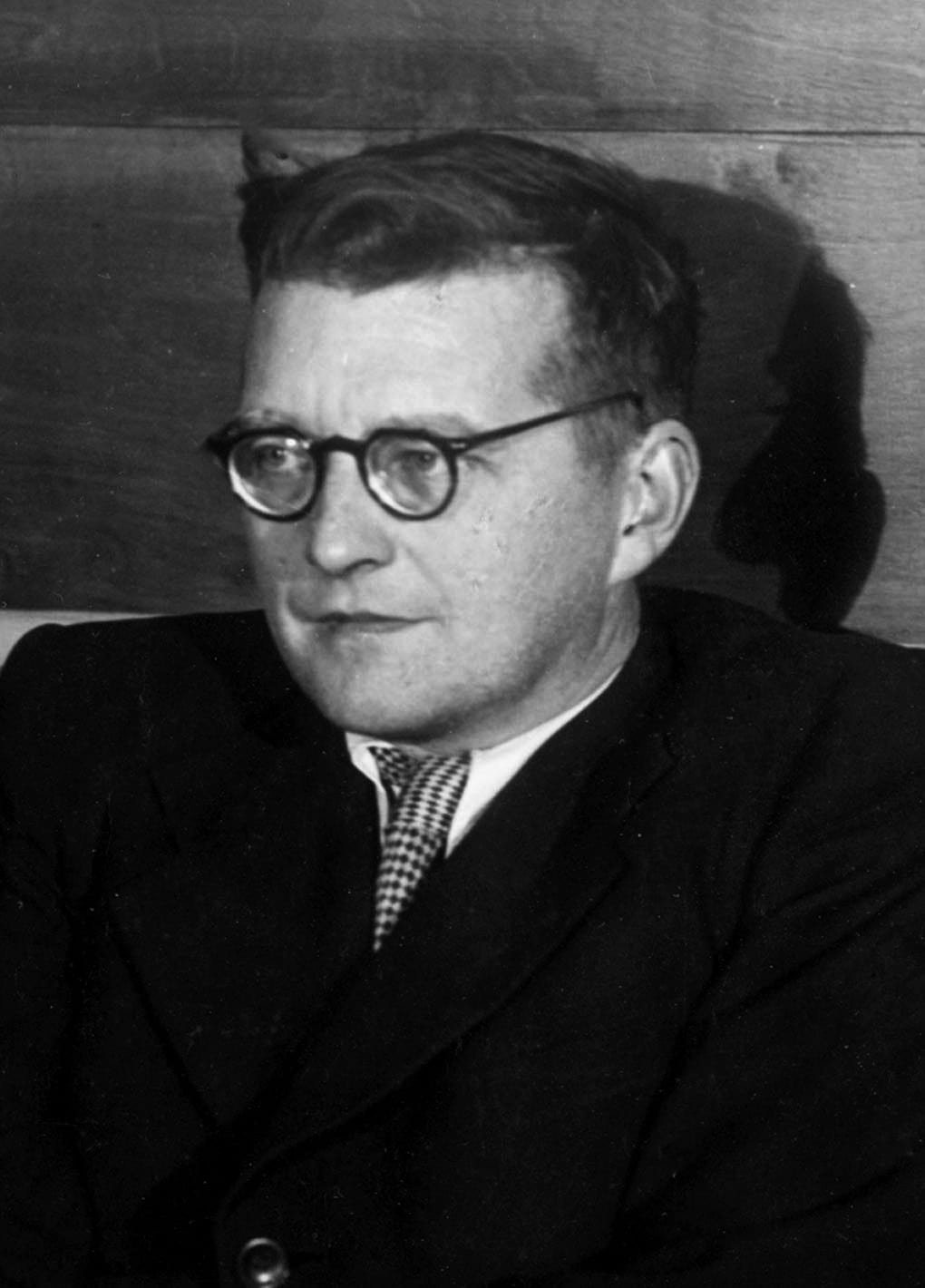
For most of his life Dmitri Shostakovich lived under the shadow of Joseph Stalin, the brutal dictator of the Soviet Union. In 1936, Stalin and some members of the Politburo attended a performance of Shostakovich’s Lady Macbeth of Mtsensk. Stalin did not like it. The next day, the opera was criticized, denounced, and ridiculed in the Soviet press. While Stalin lived it was not performed again in the Soviet Union.
As a protégé of Marshal Tukhachevky, who was executed in 1937 during one of Stalin’s purges, Shostakovich spent much of his career in fear of his life; denounced for “formalism,” his works were suppressed, and he was forced to follow the party line in his compositions and interviews with the press. Only after Stalin’s death in 1953 was he able to live as a free man and fully realize his artistic aspirations.
Shostakovich suffered from much chronic ill health but never gave up cigarettes and vodka. Symptoms had begun in 1954 with decreasing exercise tolerance and occasional falls. By 1958 his right hand had became weak and he experienced pins and needles in it, becoming unable to lift heavy objects, brush his teeth, or hang up his coat on a hook. He had several falls and fractured both legs. He stopped performing in public, but nevertheless continued to compose.
In 1965 a Soviet Union neurologist suggested Shostakovich suffered from chronic poliomyelitis. Other neurologists thought he had motor neuron disease (amyotrophic lateral sclerosis), an unlikely diagnosis because of the long course of the disease and the presence of sensory symptoms. Also considered were a motor neuropathy, syringomyelia, and cervical disk disease (difficult to diagnose in the days before CAT scans and MRI). It must be concluded that his neurologic disorder remains undiagnosed.
Shostakovich remained considerably handicapped by the fractures of both legs following falls. He suffered heart attacks in 1970 and again in 1971. He remained active in his old age and died of lung cancer on August 9, 1975.
Further reading
- Newmark J. Neurological problems of famous musicians. Journal of Child Neurology, 2009; 24(8): 1043 (August)

Leave a Reply